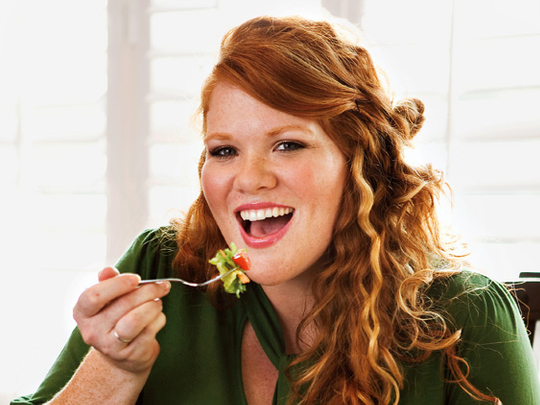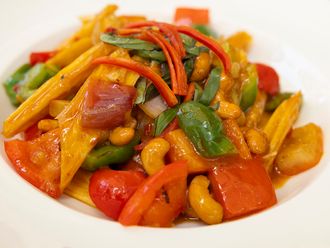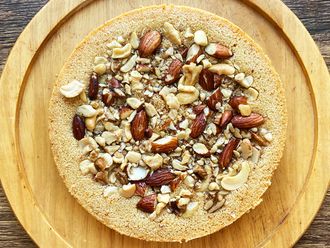
Muriel Pattison* has been trying unsuccessfully to lose weight for the last year on a salad diet. She needed to knock off a whopping 20 kilograms as she tipped the scales at 80 kilograms, which was way over what she should weigh for her 5 feet 5 inches height. The extra weight made her feel constantly tired and, as a nurse, she needed a lot more energy than she had.
"The pounds slowly crept on over the last five years," the 36-year-old says. "When I was younger I was athletic and weighed 60 kilograms. But my job is very busy and stressful and I couldn't stick to my healthy eating habits. I began snacking on the wrong foods and, of course, I piled on the weight. By the time I was 30, I was 12 kilograms overweight. I started a salad diet when I was 35 and I would usually begin the day with cucumber and peanut butter. Slowly the cucumbers started going down in quantity and the peanut butter increased. Sometimes, I'd buy a nice fresh salad at the hospital deli but pour on ranch dressing and mayo. Or on my way home, I would stop at a fast food joint and, even though I chose a salad with greens, I would add a lot of dressing and fried chicken strips as I would be ravenous by then. And then on weekends, I would binge as I felt I'd earned my cola and chips after being on salads the last five days! When I weighed myself after a few weeks, I was devastated to know I had piled on an additional eight kilograms!"
According to Dubai-based nutritionist and health expert, Helga Bergensteindottir of Health Mind and Body centre, Muriel's is a typical case. She says we must rid ourselves of the idea that salads are diet food. "Having raw food is great for your health and perhaps the best way to lose weight. But not all salads are created equal. You have to account for the hidden calories in the extra bits such as cheese, nuts, seeds, croutons, fried meat and creamy dressings that you are likely to add. Plus, these fried ingredients and salty cheese also contain high sodium, sugar and trans-fat levels, which can sometimes make a salad heavier than a burger," she warns.
What makes a salad healthy?
A typical healthy salad would be one that had at least 60 per cent raw and colourful vegetables, 30 per cent proteins and 10 per cent nuts and seeds, says Helga.
"As far as calories go, one should expect an average salad to contain fresh lettuce, tomatoes, carrots, beans, broccoli and cucumber. This would account for 50-100 calories approximately, depending on the amount. If you add two tablespoons of fat from something like olive oil, that equals to around 150-180 calories, and one chicken breast adds about 200 calories. So we can say a good salad amounts to around 400 calories approximately."
But it's not the total amount of calories that matter but what you're deriving these calories from, as some calories aren't stored by the body as fat but are used as fuel and for other body functions. You only need to worry when the calories in your salad come from creamy dressings rather than lean meats or nuts.
Helga says, "You need to make sure your salad has a good balance of carbohydrates, proteins and fat. Get the protein in your salad from grilled chicken, fish, boiled eggs, beans or quinoa; carbohydrates from rice, brown pasta or potatoes; and fats from oils like olive oil."
Healthy salad dos and don'ts
Super salads
Here are some great ideas for quick and easy salads:
Do:
- Fill up your salad plate with greens. Lettuces such as iceberg and romaine, spinach and similar darker green leaves are packed with nutrition.
- Choose one lean, healthy, dressing-free protein. Some salads really pile on eggs, chicken, and ham. Ideally, only one of these proteins should be in your salad.
- Choose three undressed colourful, non-starch vegetables such as carrots, red peppers and broccoli.
- Include some healthy carbohydrates in your salad like quinoa, brown rice, and sweet potato.
- Include some healthy fats like avocado, eggs, nuts and seeds.
Don't:
- Don't buy salads from restaurants where they have been stored for a long time; they won't have any nutritive value.
- Don't add too many toppings like croutons, nuts, and sunflower seeds. If you want to add a crunch to your salad, crumble up a pack of saltine crackers, or one small sesame stick - they are only 25 calories each.
- Don't add too much dressing. Stick to 1tbsp on average, or indulge in 1.5-2tbsp if it's a low-fat dressing.
* Name changed
















